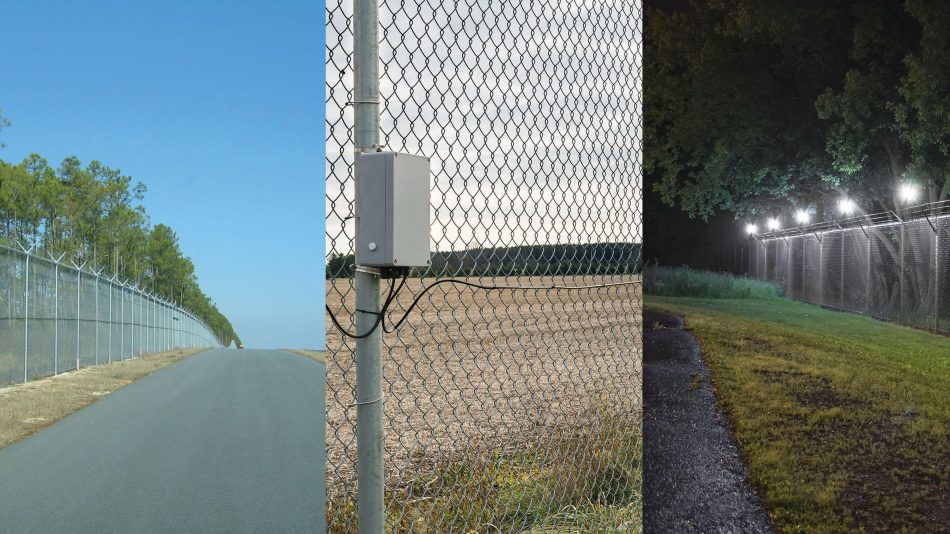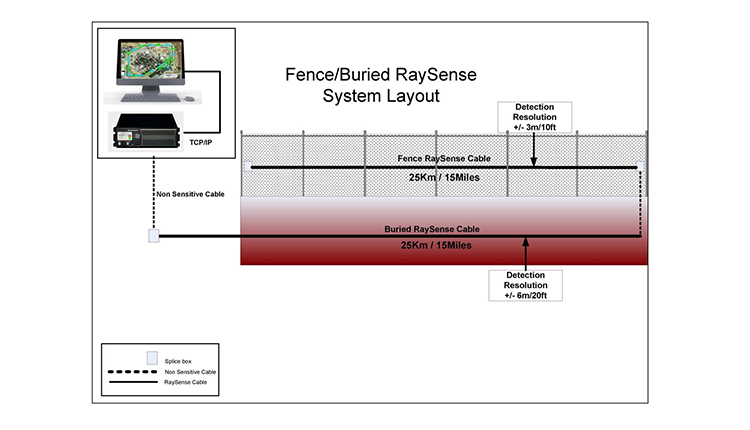Benefits a Fiber Optic Security System for Residential Security Installations
Wiki Article
Why Fiber Optic Protection Solutions Are the Future of Defense
The shift to fiber optic protection systems notes a considerable improvement in the realm of security, driven by their exceptional information transmission capacities and strength to outside disturbances. As the landscape of safety develops along with arising modern technologies such as AI and IoT, the capacity for fiber optics to improve and redefine protection facilities ends up being progressively evident.Benefits of Fiber Optic Solutions
One of the main advantages of fiber optic systems is their remarkable data transfer ability, which assists in the transmission of large volumes of data over long distances without considerable loss. This characteristic is specifically useful for protection applications that require the constant monitoring and transfer of high-definition video feeds, sensor information, and other important info. Optical fiber can accommodate the expanding needs of modern security systems, ensuring that information continues to be undamaged and reliable.Furthermore, fiber optic cable televisions are much less susceptible to electro-magnetic interference, which can be a significant concern in atmospheres with various electronic tools. This resistance enhances the stability of the data being transferred, therefore lessening the risk of data breaches or system failings. Additionally, fiber optic systems are inherently more safe than conventional copper cable televisions, as tapping right into a fiber optic line without detection is exceptionally challenging.
The durability of fiber optic cables likewise adds to their allure. They are immune to environmental variables such as dampness and temperature fluctuations, decreasing maintenance costs and boosting system long life. Generally, these benefits position fiber optic systems as a robust and efficient option for modern-day security frameworks, making certain dependable and safe and secure information transmission.
Enhanced Information Transmission Speed

The capacity to send huge quantities of information rapidly facilitates the seamless combination of high-definition video clip feeds and progressed analytics. Safety and security systems can currently process and analyze details in real-time, enhancing action times and situational awareness. In addition, fiber optic links sustain longer transmission distances without degradation of signal top quality, making them suitable for extensive safety networks.
The raised speed of fiber optic systems not just boosts the efficiency of protection procedures yet also minimizes latency. This is especially vital in vital circumstances where timely decision-making can protect against security breaches or alleviate possible hazards. As companies remain to prioritize safety and efficiency, the need for quick and trustworthy data transmission will most certainly strengthen fiber optic systems as Check This Out a keystone of contemporary security framework.
Resistance to Disturbance
Fiber optic safety and security systems regularly show outstanding resistance to electro-magnetic interference, a critical benefit in atmospheres vulnerable to digital sound. Unlike conventional copper wires, which can be negatively impacted by electro-magnetic areas, superhigh frequency disturbance, and various other types of electrical disturbance, fiber optic wires utilize light to send data. This inherent property guarantees that the signals important site continue to be clear and unaltered, no matter of surrounding digital activity.Using glass or plastic fibers in fiber optic innovation creates an obstacle against disturbance, permitting dependable data transmission even in difficult scenarios such as commercial facilities, urban locations with high digital web traffic, or areas near radio towers. This characteristic dramatically reduces the likelihood of signal deterioration or loss, making fiber optic systems specifically ideal for safety applications where honesty and accuracy of information are critical.
Furthermore, this resistance to interference improves the overall performance and dependability of safety systems, ensuring that surveillance and alert systems operate flawlessly. In a world where safety and security is significantly threatened by sophisticated technologies, the strength of fiber optic systems attracts attention as an essential feature, strengthening their status as an essential part of contemporary protection framework.
Cost-Effectiveness Gradually
Substantial price financial savings can be achieved in time with the implementation of fiber optic security systems. While the initial investment may seem greater compared to conventional copper-based systems, the long-term financial benefits become evident with decreased functional and maintenance costs (fiber security). Fiber optic cable televisions are inherently extra long lasting and much less prone to ecological elements, which translates to reduce substitute and fixing expenditures over their lifespanFurthermore, fiber optic systems need much less power to operate, which even more lowers energy expenses. Boosted data transmission capacities permit for fewer repeaters and amplifiers, decreasing devices investment and simplifying setup procedures. The scalability of these systems additionally contributes to cost-effectiveness, as organizations can increase their security facilities without sustaining substantial extra expenditures.
One more element to take into consideration is the boosted effectiveness in surveillance and response capacities that optical fiber provide. Enhanced real-time information transmission can result in quicker occurrence response times, potentially mitigating losses and liabilities related to safety breaches. In sum, the long-lasting benefits of fiber optic safety systems not only validate the preliminary expenditure but also place them as a monetarily sensible choice for organizations seeking robust defense options.

Future Developments in Protection
Advancing technologies are readied to transform safety systems, incorporating expert system (AI) and artificial intelligence to boost danger detection and action capacities. These developments will enable safety and security systems to evaluate huge quantities of data in real-time, recognizing patterns and anomalies that show prospective hazards. This aggressive approach her explanation will certainly enable faster decision-making and more reliable case feedbacks.In addition, the consolidation of the Web of Points (IoT) is leading the way for interconnected protection gadgets, using detailed monitoring and surveillance. Smart sensing units can pass on info concerning ecological adjustments, while automated notifies can inform safety and security workers instantly of suspicious activities.
Furthermore, the advancement of biometric modern technologies will certainly further strengthen safety systems. Facial recognition, finger print scanning, and retina recognition are ending up being a lot more sophisticated, supplying layers of authentication that are difficult to bypass.
Final Thought
Finally, fiber optic protection systems represent a substantial improvement in security modern technology, supplying unmatched information transmission speed, resistance to electro-magnetic disturbance, and long-lasting cost-effectiveness. As the need for advanced security solutions remains to expand, the combination of fiber optics with emerging modern technologies such as AI, IoT, and biometrics will additionally improve safety and security frameworks (fiber security). The mix of these technologies will ensure a much more safe and responsive atmosphere, solidifying fiber optics as a keystone of future safety and security systemsReport this wiki page